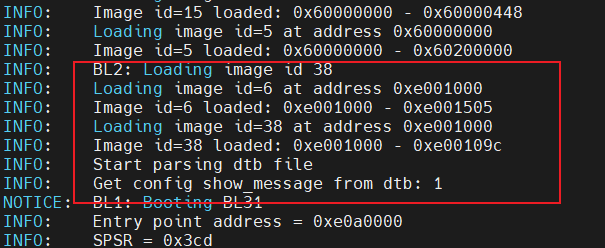文章目录
- 前言
- 一、set模拟实现
- 二、map模拟实现
前言
在C++标准库中,std::set 和 std::map都是非常常用的容器,它们提供了基于键值对的存储和快速查找能力。然而,关于它们的底层实现,C++标准并没有强制规定具体的数据结构,只是规定了它们的行为特性(如唯一性、有序性等)。不过,大多数C++标准库实现(如GCC的libstdc++和Clang的libc++)都采用了红黑树(Red-Black> Tree)作为std::set和std::map的底层数据结构。
下面都是基于红黑树实现的set和map。
一、set模拟实现
当前的红黑树需要这三个类型参数(键值、数据,通过数据求key的仿函数),这是为了map也能够复用,但是set只传入一个数据,所以采用这样的方式:<K, const K,Setfunc< K >>,因为set中的数据是不能被修改的所以在第二个类型中加上const
1、基本框架
//获取红黑树key的函数
template <class K>
struct Setfunc
{
K operator()(const K& val)
{
return val;
}
};
template <class K, class KeyOfValue = Setfunc<K>>
class set
{
public:
//红黑树
typedef RBTree<K, const K, KeyOfValue> RB;
private:
//红黑树
RB _rbset;
};
2、迭代器
这里的迭代器直接复用红黑树的迭代器。
/*
第一 K类型是作为键值给删除,查找等需要键值的接口使用的
第二 const K是作为数据,给插入等接口使用
第三 KeyOfValue是仿函数,是给红黑树将数据类型转化为key使用,如插入时使用
*/
//迭代器
typedef typename RBTree<K,const K, KeyOfValue>::Iterator iterator;
typedef typename RBTree<K, const K, KeyOfValue>::ConstIterator cosnt_iterator;
//迭代器
iterator begin()
{
return _rbset.Begin();
}
iterator end()
{
return _rbset.End();
}
cosnt_iterator begin() const
{
return _rbset.Begin();
}
cosnt_iterator end() const
{
return _rbset.End();
}
3、插入、删除、查找、清空
以上接口均复用红黑树接口
//插入
pair<bool, iterator> insert(const K & val)
{
return _rbset.Insert(val);
}
//删除
bool erase(const K& key)
{
return _rbset.Erase(key);
}
//查找
iterator find(const K& key)
{
return _rbset.Find(key);
}
//清空
bool clear()
{
_rbset.Clear();
}
4、拷贝构造和赋值重载
(1)拷贝构造:
遍历需要拷贝的对象,再插入到新的对象里。
set(const set<K, KeyOfValue> & p)
{
//遍历set,重新插入
set<K, KeyOfValue>::cosnt_iterator it = p.begin();
while (it != p.end())
{
insert(*it);
++it;
}
};
(2)赋值重载:
比拷贝构造多一步,就是在插入前需要清空。
set<K, KeyOfValue>& operator=(const set<K, KeyOfValue>& p)
{
//清空当前set
clear();
//遍历set,重新插入
set<K, KeyOfValue>::cosnt_iterator it = p.begin();
while (it != p.end())
{
insert(*it);
++it;
}
}
5、测试
void test_set()
{
set<int> _s;
//插入
for (int i = 0; i < 10; i++)
{
_s.insert(i);
}
cout << "s1: ";
set<int> s1 = _s; //拷贝构造
//迭代器遍历
set<int>::iterator it1 = s1.begin();
while (it1 != s1.end())
{
cout << *it1 << " ";
++it1;
}
cout << endl;
cout << "s2: ";
set<int> s2;
s2 = s1; //赋值
//删除
s2.erase(1);
s2.erase(5);
s2.erase(4);
s2.erase(8);
//迭代器遍历
set<int>::iterator it2 = s2.begin();
while (it2 != s2.end())
{
cout << *it2 << " ";
++it2;
}
cout << endl;
}

6、总代码
//获取红黑树key的函数
template <class K>
struct Setfunc
{
K operator()(const K& val)
{
return val;
}
};
template <class K, class KeyOfValue = Setfunc<K>>
class set
{
public:
//红黑树
typedef RBTree<K, const K, KeyOfValue> RB;
/*
第一 K类型是作为键值给删除,查找等需要键值的接口使用的
第二 const K是作为数据,给插入等接口使用
第三 KeyOfValue是仿函数,是给红黑树将数据类型转化为key使用,如插入时使用
*/
//迭代器
typedef typename RBTree<K,const K, KeyOfValue>::Iterator iterator;
typedef typename RBTree<K, const K, KeyOfValue>::ConstIterator cosnt_iterator;
//构造
set() {};
set(const set<K, KeyOfValue> & p)
{
//遍历set,重新插入
set<K, KeyOfValue>::cosnt_iterator it = p.begin();
while (it != p.end())
{
insert(*it);
++it;
}
};
set<K, KeyOfValue>& operator=(const set<K, KeyOfValue>& p)
{
//清空当前set
clear();
//遍历set,重新插入
set<K, KeyOfValue>::cosnt_iterator it = p.begin();
while (it != p.end())
{
insert(*it);
++it;
}
return *this;
}
//析构
~set() {};
//迭代器
iterator begin()
{
return _rbset.Begin();
}
iterator end()
{
return _rbset.End();
}
cosnt_iterator begin() const
{
return _rbset.Begin();
}
cosnt_iterator end() const
{
return _rbset.End();
}
//插入
pair<bool, iterator> insert(const K & val)
{
return _rbset.Insert(val);
}
//删除
bool erase(const K& key)
{
return _rbset.Erase(key);
}
//查找
iterator find(const K& key)
{
return _rbset.Find(key);
}
//清空
void clear()
{
_rbset.Clear();
}
private:
//红黑树
RB _rbset;
};
二、map模拟实现
map给红黑树传的类型为:<K, pair<const K, V, KeyOfValue> ,K类型用于删除、查找等,pair<const K, V,>作为数据插入,KeyOfValue取pair<const K, V,>中的K类型,又因为键值不能修改所以pair<const K, V,>中的K加上const修饰。
1、基础框架
//获取 pair<K,V>中的key
template <class K,class V>
struct Mapfunc
{
K operator()(const pair<K,V>& val)
{
return val.first;
}
};
template <class K, class V, class KeyOfValue = Mapfunc<K,V>>
class map
{
public:
//重命名
typedef RBTree<K, pair<const K, V>, KeyOfValue> RB;
private:
//红黑树
RB _rbmap;
};
2、迭代器
依旧是复用红黑树迭代器即可。
typedef typename RB::Iterator iterator;
typedef typename RB::ConstIterator const_iterator;
iterator begin()
{
return _rbmap.Begin();
}
iterator end()
{
return _rbmap.End();
}
const_iterator begin() const
{
return _rbmap.Begin();
}
const_iterator end()const
{
return _rbmap.End();
}
3、插入、删除、查找、清空
依旧是复用红黑树接口即可。
//插入
pair<bool,iterator> insert(const pair<K, V>& val)
{
return _rbmap.Insert(val);
}
//删除
bool erase(const K& key)
{
return _rbmap.Erase(key);
}
//查找
iterator find(const K& key)
{
return _rbmap.Find(key);
}
//清空
void clear()
{
_rbmap.Clear();
}
4、重载[ ]
当key不存在时,重载[ ]就会用key进行插入操作并返回插入后key对应数据的引用(此时key对应数据是用其默认构造进行初始化的),当key存在时,返回key对应数据的引用。
//重载[]
V& operator[](const K& key)
{
pair<bool, iterator> ret = insert(make_pair(key, V()));
return ret.second->second;
}
5、拷贝构造和赋值构造
(1)遍历需要拷贝的对象并将其数据插入当前对象即可。
map(const map<K,V, KeyOfValue> & p)
{
map<K, V, KeyOfValue>::const_iterator it = p.begin();
while (it != p.end())
{
insert(*it);
++it;
}
};
(2)先清空再遍历插入当前对象即可。
map<K, V, KeyOfValue>& operator=(const map<K, V, KeyOfValue>& p)
{
clear();
map<K, V, KeyOfValue>::const_iterator it = p.begin();
while (it != p.end())
{
insert(*it);
++it;
}
return *this;
}
6、测试
void test_map()
{
//默认构造
map<int, int> m;
//插入
for(int i = 1; i < 10; i++)
m.insert({ i,i });
//迭代器遍历
cout << "m1:";
//拷贝构造
map<int, int> m1 = m;
map<int, int>::iterator it1 = m1.begin();
while (it1 != m1.end())
{
cout << it1->second << " ";
++it1;
}
cout << endl;
cout << "m2:";
//赋值
map<int, int> m2;
m2 = m;
//删除
m2.erase(1);
m2.erase(2);
//使用[]
m2[3] = 100;
m2[4] = 100;
map<int, int>::iterator it2 = m2.begin();
while (it2 != m2.end())
{
cout << it2->second << " ";
++it2;
}
}

7、总代码
template <class K,class V>
struct Mapfunc
{
K operator()(const pair<K,V>& val)
{
return val.first;
}
};
template <class K, class V, class KeyOfValue = Mapfunc<K,V>>
class map
{
public:
typedef RBTree<K, pair<const K, V>, KeyOfValue> RB;
typedef typename RB::Iterator iterator;
typedef typename RB::ConstIterator const_iterator;
map() {};
~map() {};
map(const map<K,V, KeyOfValue> & p)
{
map<K, V, KeyOfValue>::const_iterator it = p.begin();
while (it != p.end())
{
insert(*it);
++it;
}
};
map<K, V, KeyOfValue>& operator=(const map<K, V, KeyOfValue>& p)
{
clear();
map<K, V, KeyOfValue>::const_iterator it = p.begin();
while (it != p.end())
{
insert(*it);
++it;
}
return *this;
}
//迭代器
iterator begin()
{
return _rbmap.Begin();
}
iterator end()
{
return _rbmap.End();
}
const_iterator begin() const
{
return _rbmap.Begin();
}
const_iterator end()const
{
return _rbmap.End();
}
//插入
pair<bool,iterator> insert(const pair<K, V>& val)
{
return _rbmap.Insert(val);
}
//删除
bool erase(const K& key)
{
return _rbmap.Erase(key);
}
//查找
iterator find(const K& key)
{
return _rbmap.Find(key);
}
//重载[]
V& operator[](const K& key)
{
pair<bool, iterator> ret = insert(make_pair(key, V()));
return ret.second->second;
}
//清空
void clear()
{
_rbmap.Clear();
}
private:
RB _rbmap;
};



















